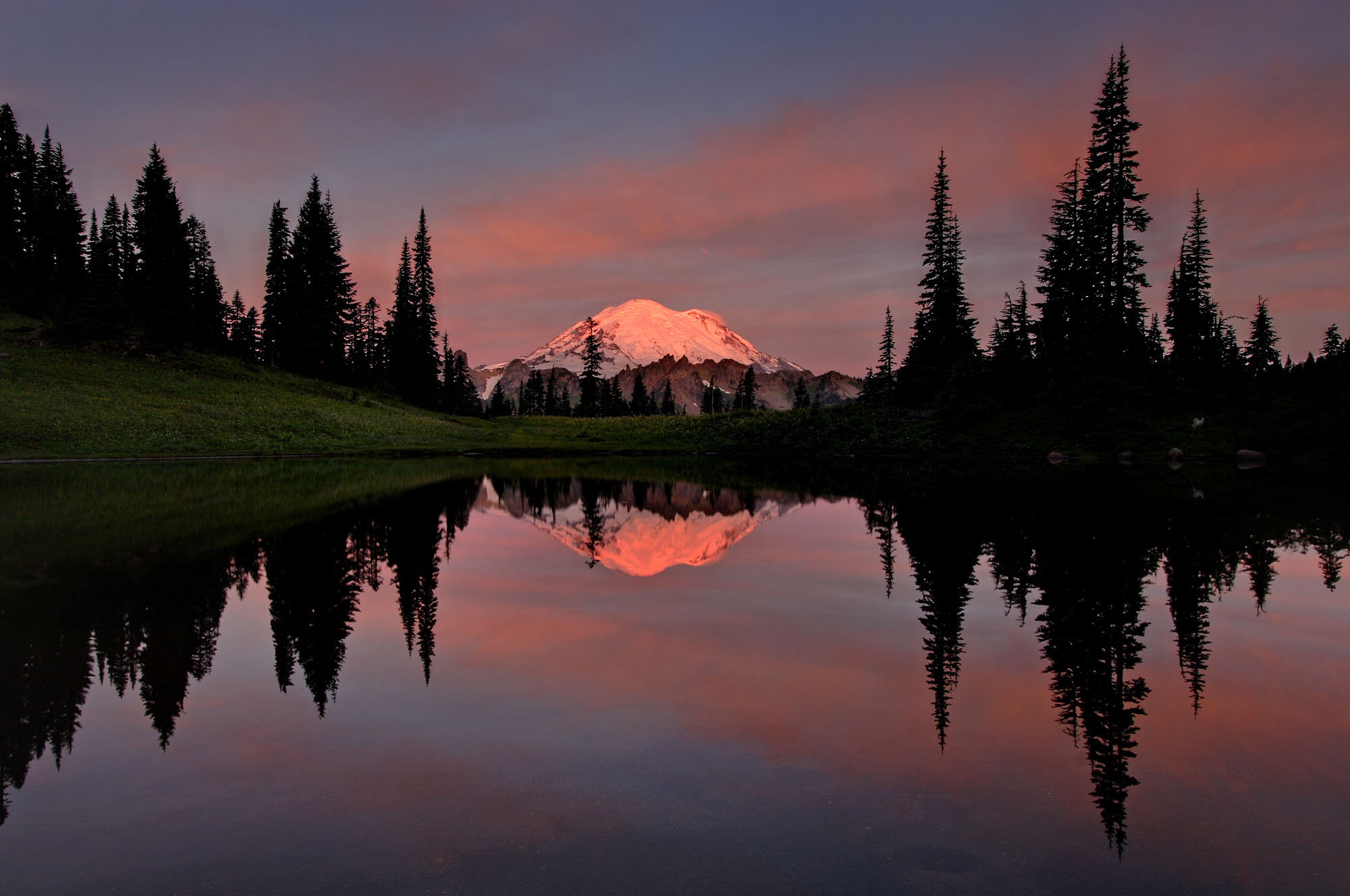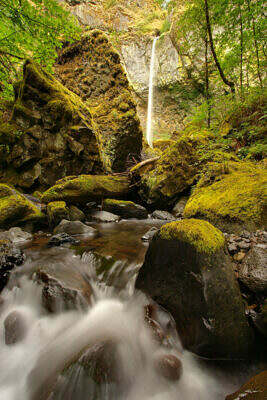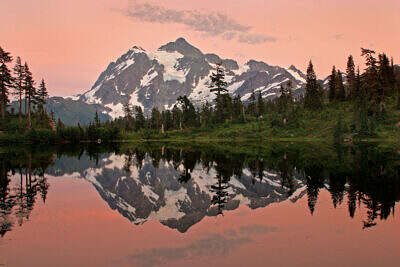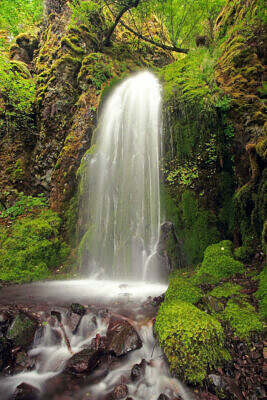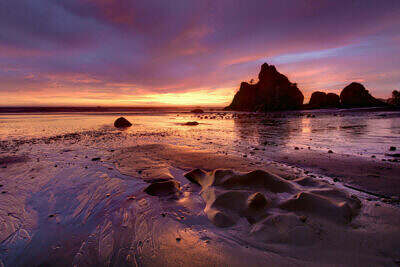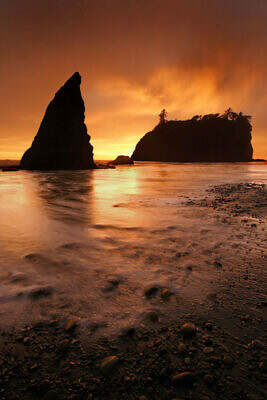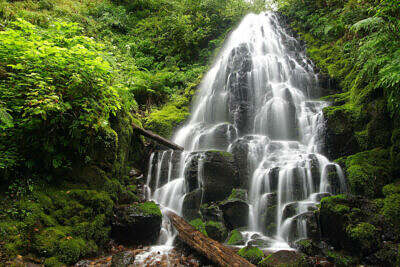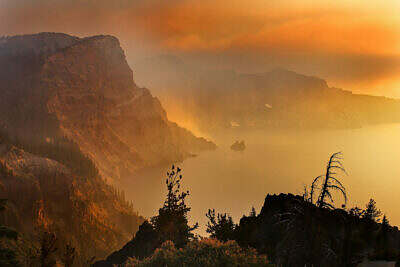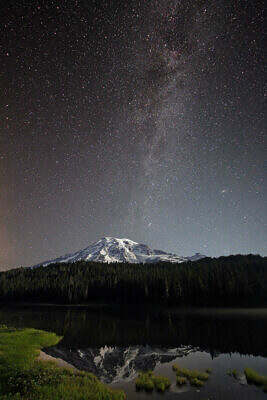The snow-capped stratovolcano Mount Rainier is reflected at sunrise in Tipsoo Lake near Chinook Pass. After a catastrophic eruption about 6000 years ago, the volcano grew to its present dimensions 2500 years ago and has since been intensively reshaped by glaciers.
Mount Rainier rises to an elevation of 4392 m (14410 ft).
-
The explosive past of Mount Rainier volcano
Into a Distant Light
- Spellbound
- Cascadia Twilight
- A Dream within a Dream
- Land on the Move
- Growth of a Continent
- Life on Lava
- Paintings with Light
- Earth Spirit Rising

